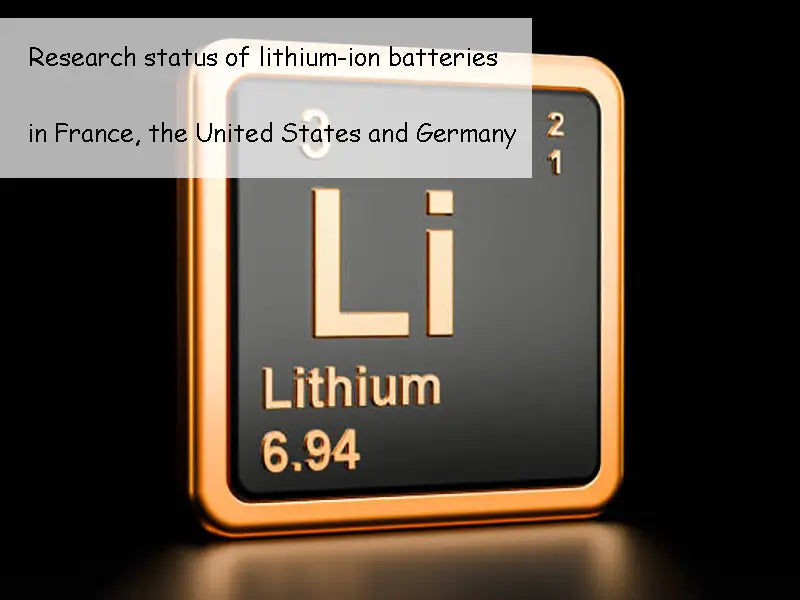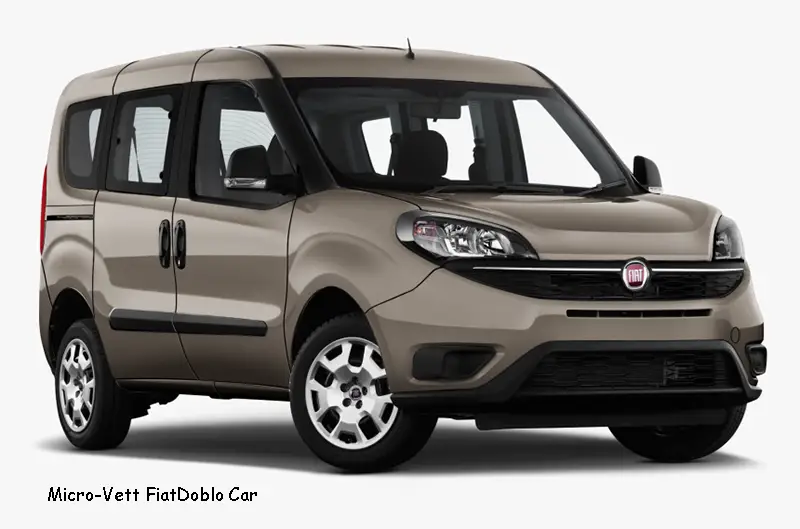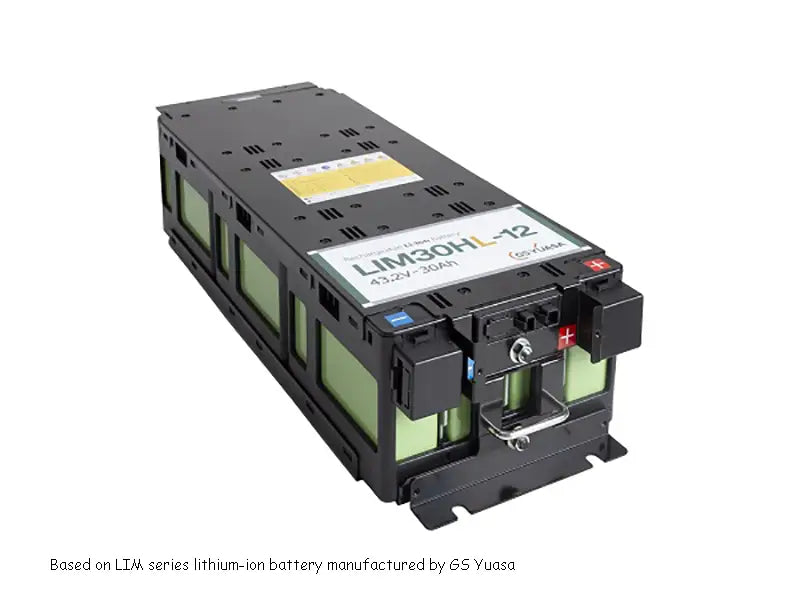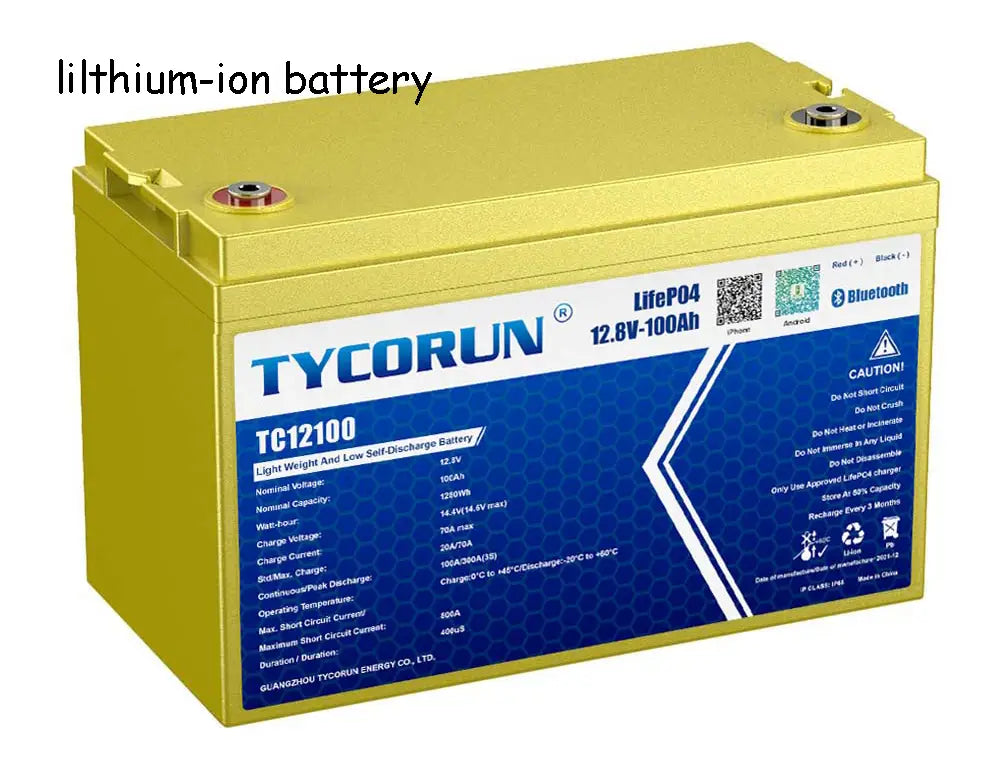
Main content:
1. Research status of lithium-ion batteries in France
Scientists from the French National Academy of Sciences and the French Atomic Energy Commission's "New Energy Technology and Nanomaterials Innovation Laboratory" have experimentally modified the "Domino-Order Model" to show that the local stress inside the lithium-ion oxide contributes to the inter-regional electrical and the conduction of ions, thereby making the battery run. Lithium-ion batteries in the future can rely on lithium-ion phosphate, an environmentally friendly material with excellent performance, low cost and good thermal stability. All these advantages make it the best material for lithium-ion batteries for future electric vehicles. However, this material does not have the ionically conductive and conductive properties that make the electrodes work. This "paradox" is explained for the first time by chemists at the CNRS-affiliated Bordeaux Institute for Chemistry of Solid Materials and research partners at CEA-Liten. By studying lithium-ion phosphate, they revealed the "domino-order process that enables the charge-discharge cycle of the battery. This phenomenon occurs as soon as there is pressure at the interface of the discharged material and the material that has been discharged. As the interface Moving, the electrical and ionic conduction in the interfacial region is extremely fast like dominoes. This new reaction process, explains how two insulating materials can make lithium-ion batteries operate. This is the low-level research that people will need in future lithium batteries. "An important step forward in cost and safe electrode materials. The findings also contribute to understanding the nanoscale processes inside future lithium-ion phosphate batteries for use in hybrid and electric vehicles."
The Micro-Vett FiatDoblo car is powered by a custom 18kW.h Altairnano lithium-ion NanoSafe battery stack and can travel 300km in a day. The lithium-ion Doblò car traveled 7,500km during the 60-day validation test run, equivalent to 45,000km of use per year.

The joint venture between GS Yuasa and Mitsubishi Motors announced in mid-October 2007 that the newly developed lithium-ion battery can extend the driving range of Mitsubishi iMiEV vehicles by 20% to 30%, from 130km to 160 to 170km. This type of lithium-ion battery was commercialized in 2010 for use in plug-in hybrid electric vehicles and energy storage in industry.

2. Research status of lithium-ion batteries in the United States
On December 19, 2008, 14 US technology companies announced the formation of an alliance to jointly promote the production of lithium-ion batteries for electric vehicles. To have the ability to mass-produce advanced batteries over the next five years will require an investment of $1.02 billion. Lithium-ion batteries are expected to replace gasoline as the primary energy source for future cars and military vehicles, the U.S. Alliance of Advanced Transportation Battery Manufacturers said. The alliance members include 3M, ActaCell, All Cell Technologies, Altair Nanotechnology, Dontech Global, EaglePicher, EnerSys, Envia Systems, FMC, MicroSun Technologies, Mobius Power, SiLyte, Superior Graphite Corporation and Townsend Advanced Energy Corporation.
Enerize and lithium-ion battery technology developer FiFe Battery announced in late September 2007 that they have joined forces to develop safe, low-cost, high-energy, rechargeable lithium-ion batteries for a variety of applications, including hybrid electric vehicles. These lithium-ion batteries feature advanced electrode materials based on FiFe Battery's new TiO2, as well as high-conductivity/high-current density MnO2 and a low-cost modified natural stone black developed by Enerize. Enerize has synthesized LiMn2O4 using high-density MnO2 as the starting material. The bulk density of spinel-based cathodes is 2.4g/cm3, and the specific discharge capacity is 110~130mA·h/g. The coating technology developed to manufacture the electrodes enables discharge capacities as high as 80 mA h/g at a discharge rate of 20 °C. Spinel-based lithium-ion batteries can maintain high electrical conductivity and excellent thermal stability, and production has reached the mid-scale stage. Based in Florida, USA, Enerize develops and designs high-performance, low-cost materials for use in lithium and lithium-ion batteries, solar cells, fuel cells and supercapacitors. FiFe Battery has a lithium-ion R&D centre in Oxfordshire, UK.
Saft announced at the end of November 2007 that it has launched a lithium-ion battery with a maximum operating temperature of 125°C. This VL 25500-125 lithium-ion battery can be used in electronic equipment operating under high vibration, high voltage and extreme temperatures. It is a reliable And low-cost lithium-ion power supply.
3. Research status of lithium-ion batteries in Germany

Süd Chemie is a leading developer of batteries for a new generation of electric vehicles and electric motorcycles. The company's lithium-ion iron phosphate batteries are inexpensive to produce and avoid the use of the toxic element cobalt in lithium-ion battery cathodes. The company produces more than 750t/a of LiFePO4, and in early 2007 built a 25 million euro production capacity of 1500t/a device in Montreal, the device was put into operation in 2009.
Scientists at the Fraunhofer Institute for Silicate Research in Germany announced a major breakthrough in lithium batteries in April 2008. In 2007, a large number of Sony batteries were recalled due to fires, and consumers were increasingly concerned about the safety of electronic devices powered by lithium-ion batteries due to the flammable nature of lithium-ion batteries. However, ISC scientists have found a solution, described by Kay-Christian Muller, who led the research project, by successfully replacing the flammable ones used in lithium batteries with non-flammable solid-state polymers. organic electrolyte.
At present, lithium-ion batteries are widely used in electronic products and are rapidly replacing traditional alkaline batteries. Lithium-ion batteries are favored by manufacturers and consumers because of their higher energy density and easier charging. However, lithium ion is a relatively unstable substance, and the problem of overheating is particularly prominent. Lithium ions are flammable, so if the temperature gets too high and the product's external hardware doesn't effectively wrap it around, the organic electrolyte can burn and spark. With this major breakthrough in this area by ISC, that fear may disappear entirely. "This can greatly improve the safety of lithium batteries," Mueller said. "Also, because it's a solid material, the electrolyte doesn't easily leak out of the battery." Therefore, the problem of maintaining high energy density in existing lithium-ion batteries is to be solved. Mueller said they would overcome this obstacle by tweaking some of the basic ingredients in lithium ions. ISC says it has built a prototype of the non-flammable lithium-ion battery. However, there is still some research work to be done to further improve the performance of this battery. Scientists involved in the project say it will take three to five years for the new lithium-ion technology to be used in consumer electronics.
Read more: Development status of lithium-ion battery technology